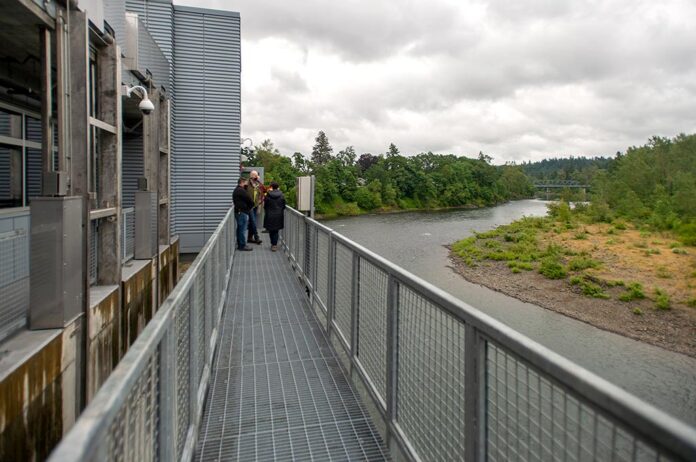
When it comes to the massive infrastructure projects needed to provide Oregon residents with day-to-day necessities of life, the way forward for cities is increasingly through regional partnerships.
It’s a financial and logistical necessity, say Tigard City officials. And nowhere is that more evident than with the City’s partnership with the City of Lake Oswego to supply the residents of both cities with clean drinking water. That partnership has now supplied fresh water from the Clackamas River for five years, and it is a joint venture that officials from both cities agree has been tremendously beneficial for everyone involved.
“Tigard for so many years, used words like ‘rented’ water from Portland, and we had that supply for a long time,” said Tigard Public Works Director Brian Rager. “Tigard never really owned its own water source. So, the opportunity arose as we were evaluating our options, and the Lake Oswego partnership was one of those options and it just panned out in the long run to be the most cost-effective for us and for Lake Oswego.”
Over a decade ago, Portland kicked off a long-term improvement program that included hundreds of millions of dollars in capital improvements, including new reservoirs, pipelines and a new filtration plant downstream of Bull Run, where it sources fresh water. That meant a significant hike in rates it would charge Portland residents, as well as cities like Tigard that purchased water from them. That led municipal customers, including Tigard, to reevaluate those contracts and seek other sources of water.
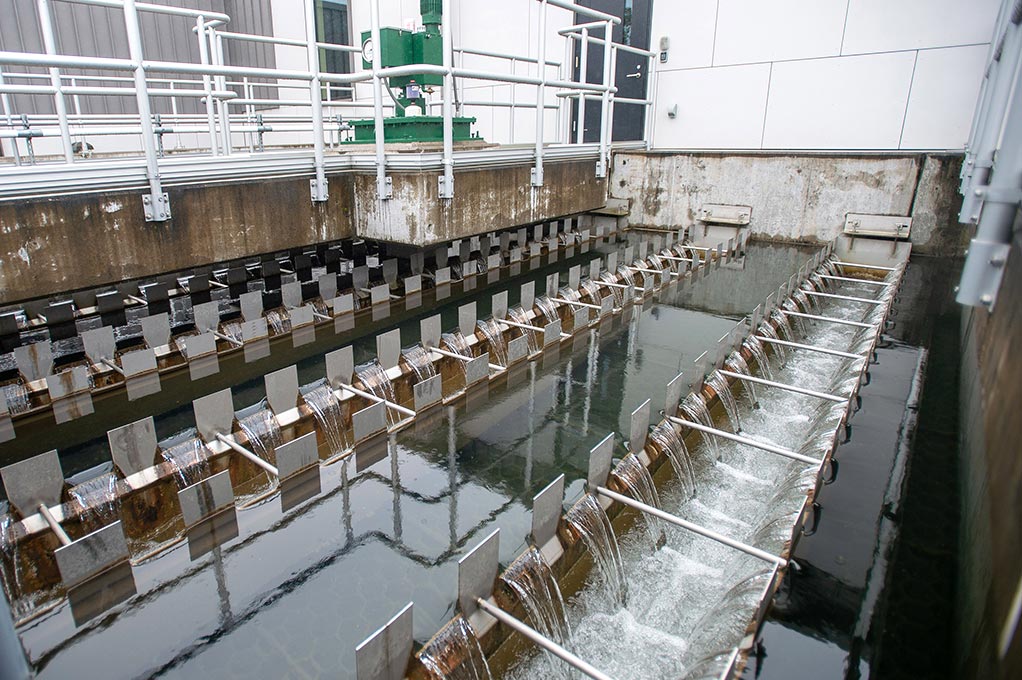
As it happened, Lake Oswego was also looking to upgrade its own system at that time.
“Lake Oswego’s system was undersized and aging, and we really were at capacity,” said Lake Oswego Citizen Information Specialist Katy Kerklaan. “We needed to upgrade our system and replace our system, so the partnership came to be because Tigard had been looking for their own water source for quite some time.”
The two cities signed an intergovernmental agreement in 2008 declaring a shared interest in jointly developing a new water supply system. Between then and 2017, that agreement resulted in the construction of a new 38-million-gallon water treatment plant, a new raw water intake on the Clackamas River, 10-and-a-half miles of new transmission line, including a segment that was drilled underneath the Willamette River, a new 3.5-million-gallon reservoir and a water pump station in Tigard.
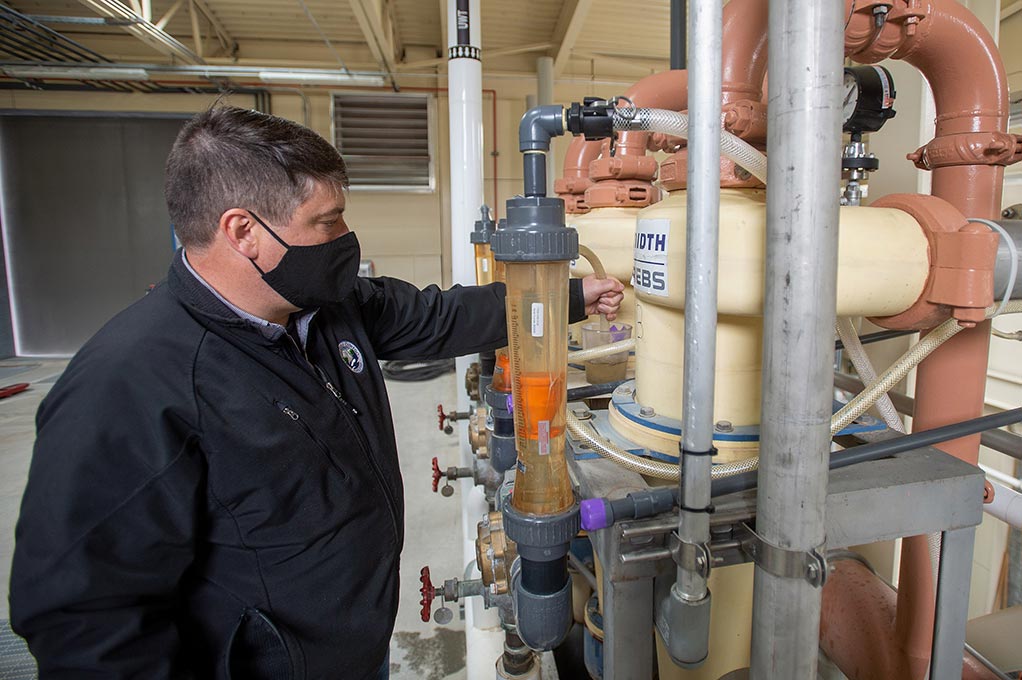
Today, the two cities are celebrating the fifth anniversary of that system becoming operational.
“Thinking about how exciting it is for the two communities to be working together, even in the emergencies we’ve had in the last year, having access to increased water, we’ve now got more emergency inter-ties between the two communities, and regionally as well,” Kerklaan said.
The new River Intake Pump Station, or RIPS, that sits on the Clackamas River in Gladstone is the beginning of the system. There, up to 38 million gallons of water per day are drawn from the river and piped a little over two miles to the new water treatment plant, which is just north of Mary S. Young Park in West Linn.
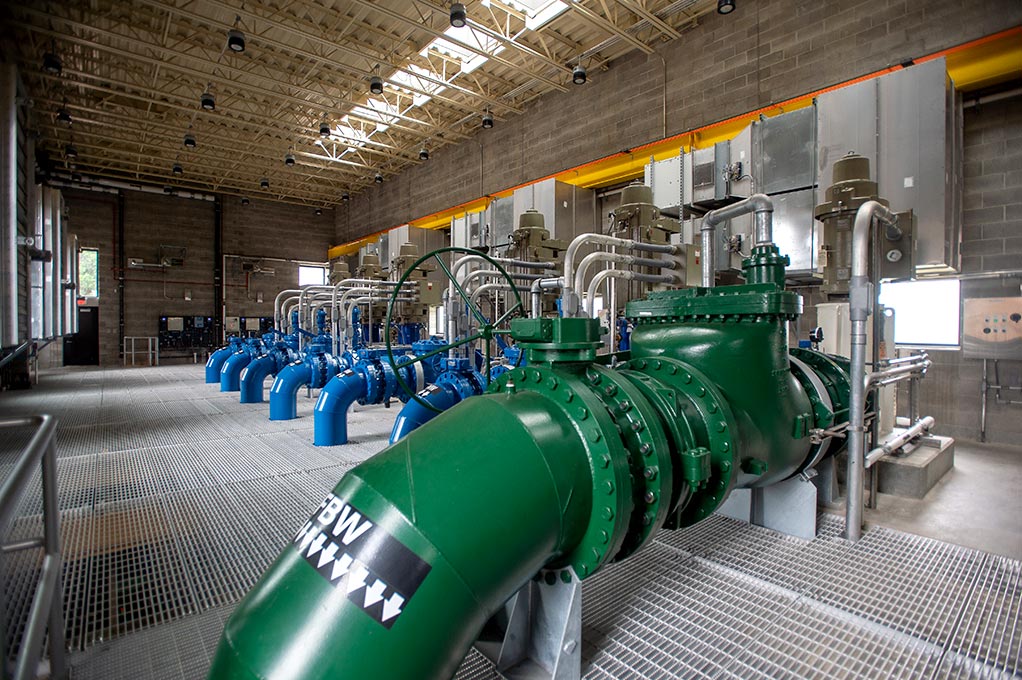
The treatment plant was built on a nine-acre site that once held Lake Oswego’s old treatment plant. The old plant remained in operation during construction of the new one, said plant manager Bret Bienerth, and was only taken offline in 2016 when the new facility was able to take over and begin supplying clean water to Tigard and Lake Oswego residents. It was finally finished in 2017 with the installation of an ozone disinfection system that makes the plant as modern as any in the Pacific Northwest.
In addition to ozone disinfection, raw water is pushed through filters to remove dirt and sediment from the river, and it is also treated with chlorine and other chemicals to further eliminate any potential contaminants and pathogens.
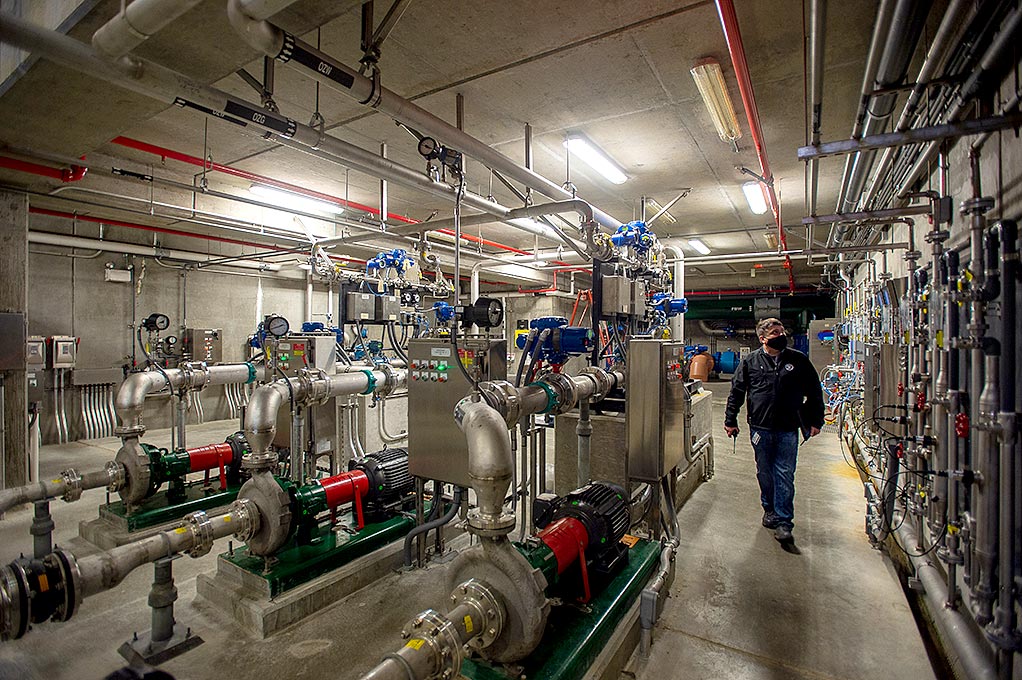
“It goes through ozonation and it goes through six filters, it’s like a giant Brita water filter,” Bienerth said. “The clean water then goes into a clear well where we hit it with a little bit of chlorine, which is what we need for disinfection, and then out into the pipeline.”
“And it was all built to modern seismic standards,” added Rob Murchison, Tigard’s Assistant Public Works Director. “Which is a huge leap ahead into the future for what we’re planning and what we know about. The fact we put the money and effort in now is going to pay dividends in the future.”
Proving its worth
The new system also features a series of inter-ties that allow water to be pumped between the two cities in either direction. Additional inter-ties link Lake Oswego with West Linn and Oregon City, making it a truly regional system that provides redundancy in case of emergency. It’s already come in handy, too. During the massive winter storm in February, power was out across Clackamas and Washington Counties, and Tigard and Lake Oswego were not spared.
Crews from both cities scrambled to find massive portable generators that could supply enough power to keep the water intake and treatment plant running, while previously untested emergency plans proved their worth and enabled water to flow from Tigard back to Lake Oswego when it was needed most.
“On Friday night at (the River Intake) we lost both power feeds, and on Sunday the last feed at the treatment plant went down,” Bienerth said.
They found the needed generator in Hillsboro and were able to rent it just 20 minutes before public works crews from Oregon City called in with the same request. Then Lake Oswego crews needed to clear downed trees from Kenthorpe Way in West Linn to get the generator to the treatment plant.
During this time, Tigard was able to keep Lake Oswego’s water supply fulfilled through reserves stored in reservoirs.
“With the distribution system, we had the storage reservoirs, and we actually allocate certain volumes in those tanks or reservoirs to emergency operations,” Murchison said. “We can buy some time and give experts time to actually go in and figure out how to hook a generator up.”
It was the first time Tigard reversed the flow, Kerklann added.
“We had designed it to do that but we had never done it,” Murchison said.





















